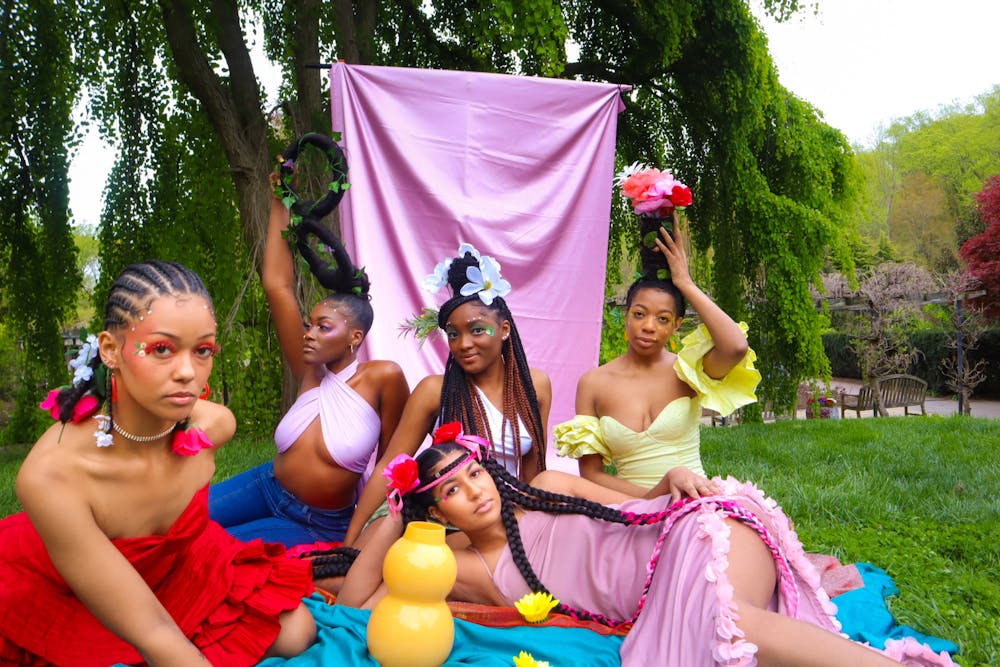Hopkins alumni Mecca McDonald and Mia Dunn want to do more than make accessories – they want to revolutionize the jewelry industry. McDonald and Dunn, who graduated in spring 2021, spoke to The Women’s Network on Oct. 13 about their experiences starting Mo.Na. Gems, which creates environmentally sustainable jewelry.
The fast fashion industry is a huge source of waste – manufacturing clothing and jewelry that quickly falls out of trend and ends up in landfills. McDonald and Dunn are working to break this harmful pattern with their 100% biodegradable jewelry under the acronym Mo.Na., standing for “mother nature.”
Despite the environmental appeal of their jewelry, McDonald and Dunn emphasized their desire for Mo.Na. Gems to disrupt the typical look associated with eco-friendly fashion.
“I think a lot of the brands I know who are claiming to be sustainable do look a certain way,” Dunn said. “They do look a bit granola, and we want our products to be something that people shop for based off of aesthetics and the sustainability factor.”
McDonald recounted their efforts towards developing the perfect bioplastic formula.
“The summer between junior and senior year we literally would meet every single day,” McDonald said. “‘Are we going to crack the code today? Is today the day that we crack the code?’ It took us seven months.”
Although McDonald and Dunn found that their bioplastic could be produced in an apartment kitchen so that using lab facilities wasn’t a necessity, they did give advice on how to take advantage of the University’s resources. They recommended a two-semester product design course, which helped them refine and find funding for their business. They also mentioned the Fuel Accelerator program offered by FastForward U as an excellent way to fast-track learning about entrepreneurship.
Dunn discussed how she balanced the University’s intensive workload with her passion projects and creative outlets.
“I definitely consider myself a visual artist, and at Hopkins, I felt like that was something I was missing,” Dunn said. “When Mo.Na. came around, I was like, ‘Wow, this is so fun, and I’m really passionate about it.’”
McDonald described a similar experience of dissatisfaction with the art community at Hopkins and the relief of finding a creative outlet through Mo.Na. Gems.
“I definitely felt like there was a lack of an art community at Hopkins... I always tried to make sure I found time for my creativity outside of classes,” she said. “I feel like Mo.Na. was just a huge passion project that birthed into something more than both of us imagined.”
Mo.Na. Gems has amassed over 28,700 followers on Instagram and recently accumulated $5,000 dollars in donations. In terms of future prospects, McDonald and Dunn hope to grow their own personal artistic careers and expand their bioplastic manufacturing.
“We would want Mo.Na. to be able to replace all the plastic accessories that exist,” McDonald said. “We would definitely want to sell our bioplastic... It would be cool if we could be a bioplastic manufacturer, if we were able to scale that large.”
Dunn majored in Chemical and Biomolecular Engineering at Hopkins. Junior Kinsey Thorpe, vice president of The Women’s Network, hoped Dunn’s story would inspire other STEM majors to pursue ambitions outside of their academic focus areas.
“I think what we wanted to grasp was that being a STEM major at Hopkins doesn’t mean you can’t pursue your goals and ambitions,” Thorpe said in an interview with The News-Letter. “That is the mission statement of The Women’s Network: not seeing ambition as a negative thing but going above and beyond.”
Sophomore Sophia Berkey, a member of The Women’s Network who attended the event, told The News-Letter about how Mo.Na. Gems’ larger vision inspired her.
“I think my biggest takeaway from the event was regarding thinking on a very large scale. Even though right now their main focus is on the specific jewelry that they’re making, the larger goal is to take over the entire plastic industry,” she said. “It’s inspiring to understand that they’re taking their bioplastic to a larger scale eventually.”





